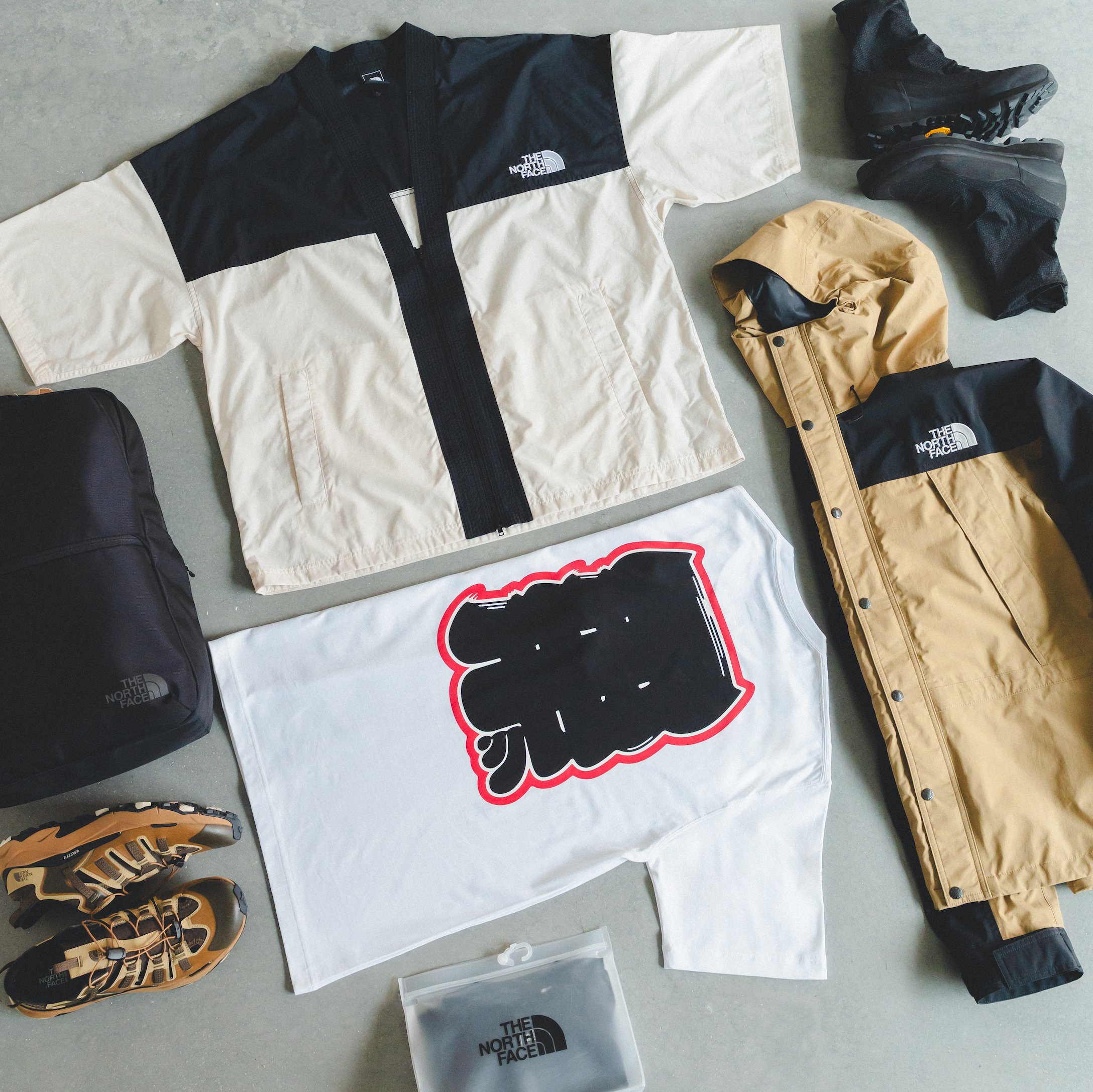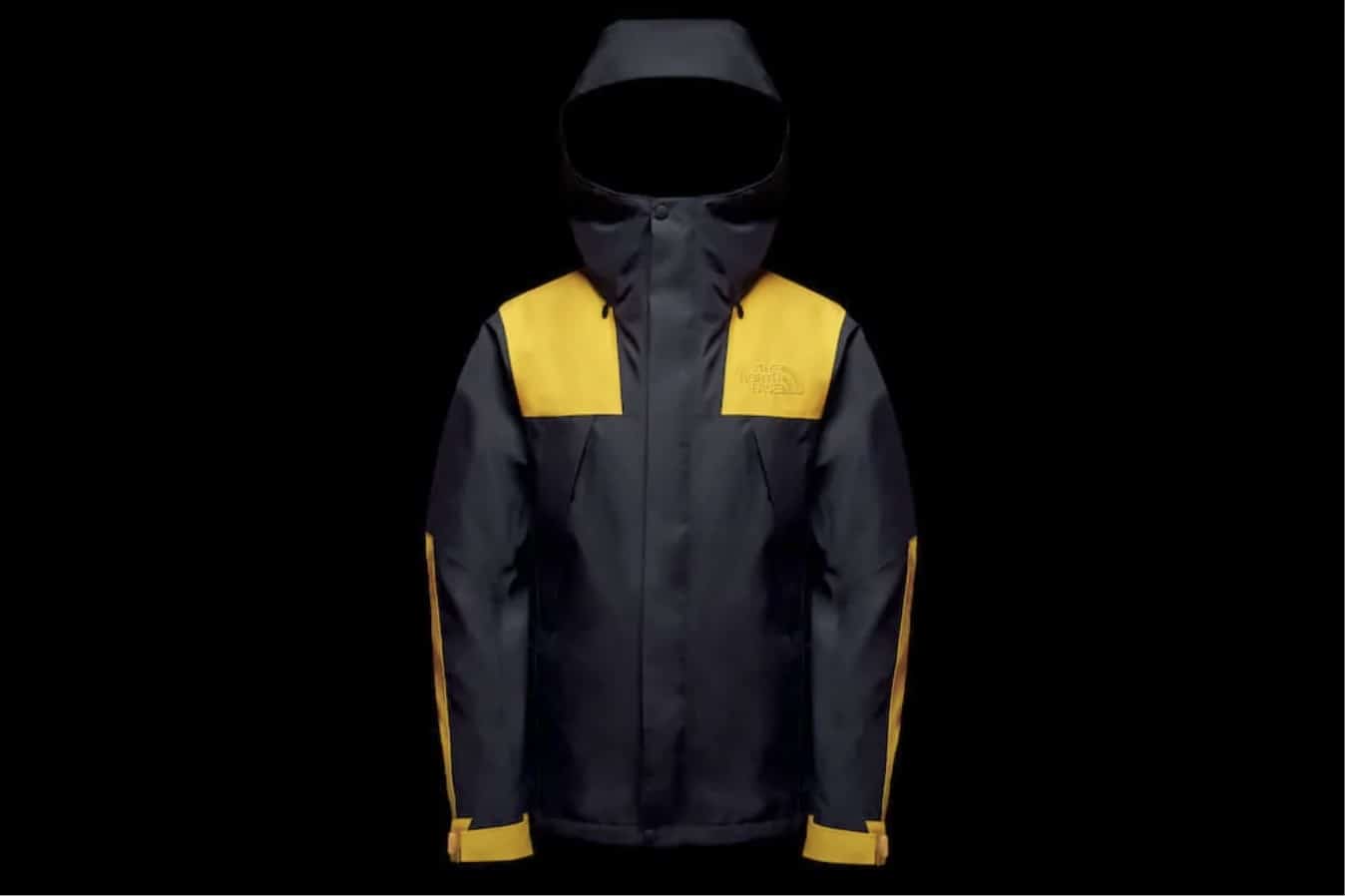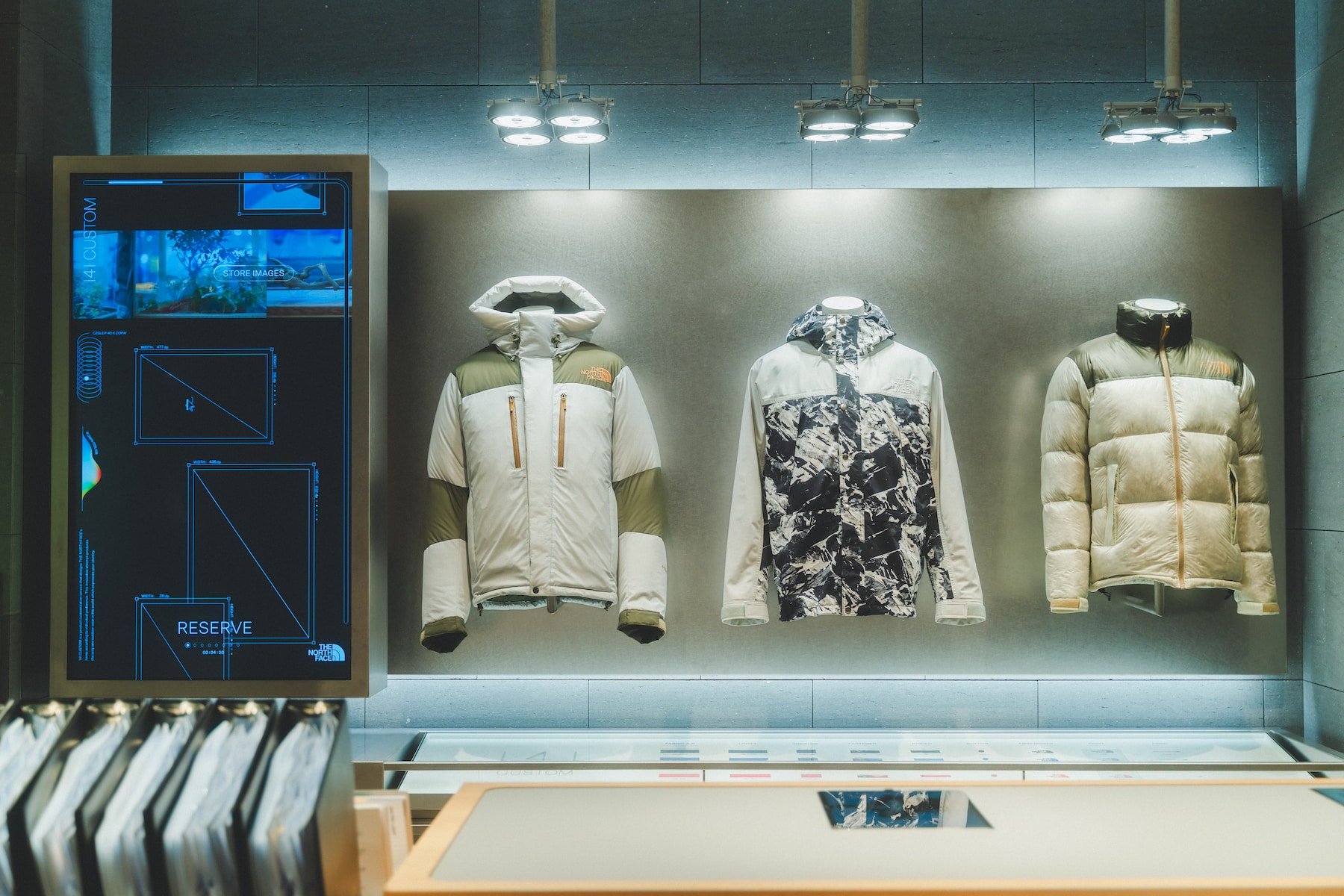CATEGORY
AREA

2025.06.10
While "The North Face" is beloved worldwide, Japan has developed its own unique items and distinctly Japanese retail experiences. Beyond simple adjustments to sizing and colorways, designs created specifically for Japanese needs have proven refreshing to international users. We delve into the story behind Japan's distinctive "The North Face" evolution.
The outdoor brand "The North Face," born in America in 1966, is cherished by a wide range of users not only for its authentic outdoor gear but also as fashionable everyday wear. Sales began in Japan in 1978. Since then, how has the brand expanded its recognition in the Japanese market? According to Kazuhiro Iijima, product planning manager for "The North Face" at "Goldwin" Corporation—the company responsible for developing products distributed domestically in Japan—the development of everyday-use products became the catalyst for expanding brand recognition.
"When we at 'Goldwin' first began importing and selling 'The North Face' in Japan, the brand's main users were primarily mountaineers, so most sales were through outdoor specialty stores. After acquiring the trademark rights in 1994, we began to design products for daily wear, exclusively targeting domestic users. This became the catalyst for shifting our focus from sales at outdoor specialty stores to our directly-operated stores, and we proceeded to expand the number of locations."
The background to "The North Face" being accepted as a fashion item and gaining widespread user recognition involved challenging industry taboos.
"In the outdoor industry, black and dark-colored wear was considered taboo because poor visibility could increase the risk of accidents. At that time, when Japan had few outdoor users, our plan was for black outerwear. While this has become commonplace now, initially, outdoor specialty stores were reluctant to carry it. This prompted us to boldly pivot toward focusing on sales through our directly-operated stores. Subsequently, based on the response from our directly-operated stores, we gradually increased original products for the Japanese market, and our current brand image became widely established."
Currently, products handled by "Goldwin" Corporation account for approximately 95% of products sold domestically in Japan. While some are designed from scratch and others are the same classic items as in the home country, both are modified for the Japanese market.
"Even items that appear to be standard classics are actually different products when distributed domestically in Japan. Not only sizing and silhouette, but material selection and detail specifications are also uniquely modified for Japanese specifications to suit Japan's climate. Rather than simple color or size variations, products that we develop from the fabric level up are truly Japanese products."
The iconic light outerwear, Mountain Light Jacket, features colorway and material combinations arranged specifically for the Japanese domestic market. ¥44,000
Lightweight outerwear using breathable mesh fabric. Features insect-repelling and UV-cutting functions. ¥19,800
Adopts uniquely developed Japanese materials that provide synthetic fiber-like quick-drying properties, yet being 100% cotton. Two-pack T-shirts. ¥8,800
Rain boots made from Gore-Tex material, known for excellent moisture-permeable waterproof properties. The upper can be folded for compact portability. ¥27,940
Backpacks designed for business scenes, rather than outdoor gear, represent a uniquely Japanese approach to domestic planning and design. ¥28,600
With the recent increase in international tourists, there has been growing demand for more distinctly Japanese products. Sales have begun for items incorporating elements of Japanese culture. Particularly striking are items that fuse designs inspired by traditional Japanese culture—such as kanji characters and kimono—with "The North Face's" signature functionality.
For example, the Happi Jacket, inspired by the happi, Japan's traditional garment, and T-shirts featuring graphic designs by Japanese artist SNEAKERWOLF, known for works featuring kanji characters, pursue distinctly Japanese design. They're well-received not only by international users but also by Japanese customers. The combination of The North Face's signature functionality, uniquely Japanese design, and the special appeal of being available only in Japan has captured the attention of international tourists.
A jacket that fuses the shoulder panel design characteristic of "The North Face's" classic Mountain Jacket with the form of Japan's traditional happi garment. ¥15,950
Japan's "The North Face," which has developed its own directly-operated store network, currently has eight directly-operated stores in Harajuku and Shibuya alone, each with distinctive concepts and product compositions. Having this many stores in such a concentrated area is apparently a characteristic not found in overseas "The North Face" locations.
Among these, "The North Face Lab" in Shibuya Parco has gained attention for its "141 CUSTOMS" service, which allows customization according to individual size and preferences. Using a 3D scanning system, patterns are created to match individual body types, and customers can combine colors for outer fabric, lining, zippers, buttons, logos, and more according to their preferences. This creates a one-of-a-kind "The North Face" item that exists nowhere else in the world.
The Mountain Jacket, created in the brand's early days, and still a popular winter staple today. "141 CUSTOMS" allows size adjustments down to the millimeter.
The reason why the Japanese planning of the global brand "The North Face" has been able to respond so meticulously to Japanese needs is thanks to the achievements of "Goldwin" Corporation, which has continued tireless efforts with an eye toward the next era. Having established its position in Japan and appearing unique and fascinating to international users as well, expectations are rising both domestically and internationally for Japan's "The North Face."








